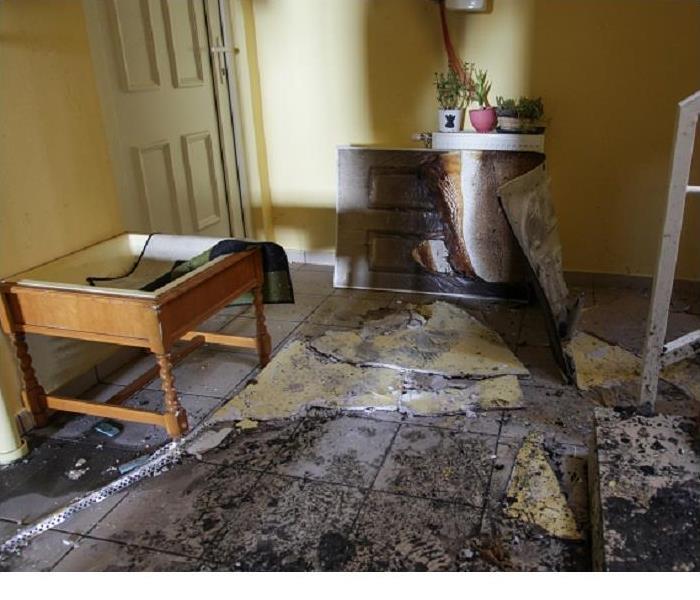Fire Restoration Professionals Talk About Cleaning Methods to Restore Fire Damaged Rifle Homes
7/9/2019 (Permalink)
 There is not a one size fits all solution to clean fire damaged possession. SERVPRO has several cleaning methods used to restore your home.
There is not a one size fits all solution to clean fire damaged possession. SERVPRO has several cleaning methods used to restore your home.
Restoring Fire Damage Property in Rifle Homes
Despite having the Colorado running through town, Rifle residents know that fire season is just getting underway. Recent rains dry up quickly as the temperature rises and put their homes at risk.
Fire damage in Rifle homes can be everything from a burned out roof to the thick smoke residues coating every surface in the kitchen, dining room, and elsewhere after a fire. SERVPRO response crews train their personnel as Fire & Smoke Damage Restoration Technicians, or FSRTs to ensure they can clean residues on everything from upholstery fabrics to drywall, and more.
Each FSRT trains to become skilled on four primary cleaning actions. Each one is designed to break residues from the surface they adhere to after the fire. Depending on the surface and type of residues, technicians use Suspension and Dispersion, Mechanical, Lubrication, or Chemical Actions.
Suspension and Dispersion is the first and most common cleaning action used by SERVPRO. Technicians loosen soils with a cleaning product, which become suspended in the solution, and dispersed. Suspension happens when the soils dissolve in the cleaner or remain intact inside a cleaner they cannot mix with chemically. FSRTs remove them using a sponge or extraction device. It is useful on items like drywall.
Mechanical Action is also called Agitation. Technicians use it, sometimes with a cleaning agent, to physically break up residue layers on fabrics, stone, metal, and more. Since some surfaces absorb cleaning products, a scrub brush or mechanical agitator is also a preferred method to remove them along with the residues and other soils.
Lubrication Action breaks the link between residues and surfaces by making them slippery. The detergents and other cleaners work their way under the residue or other soil so they ‘slide’ into them for easy removal. It is a particularly useful action on glass and metal surfaces.
Chemical Action alters residues by application of a cleaning agent. The alteration allows technicians to more easily remove them using sponges, vacuums, and devices like extraction wands to pull residues and the shampoo cleaner from carpets.
At SERVPRO of Garfield & Pitkin Counties, we understand that a home is far more than four walls and a roof. Memories sometimes link closely to personal property, so our response teams take every action possible to restore the items in Glenwood Springs, New Castle, and Silt homes, as well as the structure, to their pre-fire condition. To schedule a service visit, contact us at (970) 618-1516.
More about Rifle.






 24/7 Emergency Service
24/7 Emergency Service